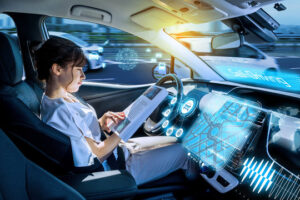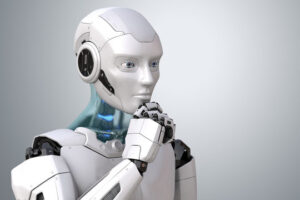What is Autonomous technology?
Autonomous technology refers to systems and devices capable of performing tasks and making decisions without human intervention. These technologies leverage advanced algorithms, artificial intelligence (AI), machine learning (ML), and sophisticated sensors to navigate and interact with their environment. The key domains where autonomous technology is making significant strides include self-driving cars, drones, and robots.
Self-Driving Cars

Self-driving cars, also known as autonomous vehicles, are one of the most prominent applications of autonomous technology.
Components and Technology
Sensors and Cameras: These provide real-time data about the car’s surroundings, including obstacles, road conditions, and traffic signals.
LiDAR and Radar: LiDAR (Light Detection and Ranging) and radar systems create detailed 3D maps of the environment to aid in navigation and obstacle detection.
GPS and Mapping: High-precision GPS combined with detailed digital maps helps the vehicle determine its exact location and plot routes.
AI and ML Algorithms: These algorithms process data from sensors to make real-time driving decisions, such as changing lanes, stopping at traffic lights, and avoiding collisions.
Drones
Drones, or unmanned aerial vehicles (UAVs), are another significant application of autonomous technology, used in various industries for tasks that range from aerial photography to delivery services.

Types of Drones
Commercial Drones: Used in industries such as agriculture, construction, and logistics for tasks like crop monitoring, surveying, and delivery.
Military Drones: Used for reconnaissance, surveillance, and combat operations.
Technologies in Drones
Autonomous Navigation: Using GPS, inertial measurement units (IMUs), and AI algorithms, drones can navigate predefined paths and avoid obstacles.
Computer Vision: Enables drones to recognize and track objects, assess environments, and execute tasks like package delivery with precision.
Communication Systems: Ensure stable and secure data transmission between drones and control stations or other drones.
Robots

Autonomous robots are used in various sectors, including manufacturing, healthcare, and service industries, to perform tasks that range from assembly line work to personal assistance.
Industrial Robots
Collaborative Robots (Cobots): Designed to work alongside humans, assisting with tasks that require precision and repetition.
Autonomous Mobile Robots (AMRs): Used in warehouses and factories for material transport and logistics, navigating through complex environments using AI and sensor data.
Service Robots
Healthcare Robots: Assist in surgeries, patient care, and medication delivery, leveraging AI for precise and safe operations.
Household Robots: Include vacuum cleaners, lawn mowers, and personal assistants, equipped with sensors and AI to perform domestic tasks efficiently.
Artificial Intelligence and Machine Learning
AI and ML are the core technologies driving the capabilities of autonomous systems, enabling them to learn from data, adapt to new situations, and improve performance over time.
Role of AI in Autonomy
Decision Making: AI algorithms enable autonomous systems to make informed decisions based on real-time data analysis.
Natural Language Processing (NLP): Moreover, it allows robots and AI systems to understand and interact with humans using natural language.
Computer Vision: Additionally, AI techniques like deep learning enable systems to interpret visual data from cameras and sensors.
which is crucial for navigation and object recognition.
Machine Learning in Autonomous Systems
Supervised Learning: Furthermore, it is used to train models on labeled datasets, thereby enabling them to predict outcomes based on input data.
Unsupervised Learning: Moreover, it helps in identifying patterns and structures in unlabeled data.
which is essential for anomaly detection and clustering.
Reinforcement Learning: By enabling systems to learn optimal actions through trial and error, this approach enhances decision-making in dynamic environments.
Conclusion
Moreover Autonomous technology represents a revolutionary advancement, transforming industries and everyday life through intelligent, self-operating systems. However From self-driving cars and drones to versatile robots, these technologies rely heavily on AI and machine learning to navigate, make decisions, and perform complex tasks autonomously.
As research and development in this field continue to progress, the potential applications and benefits of autonomous technology will only expand further, shaping the future of various domains.

